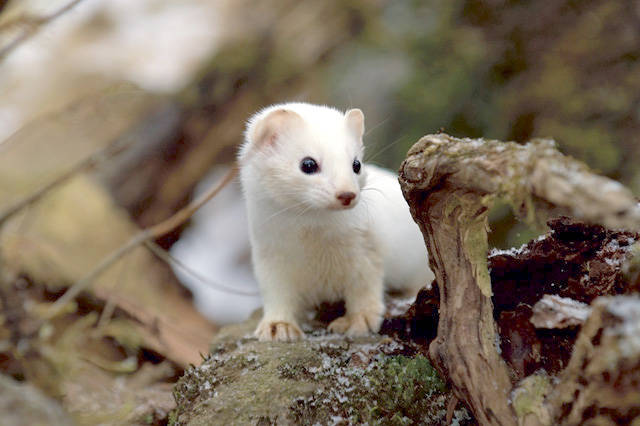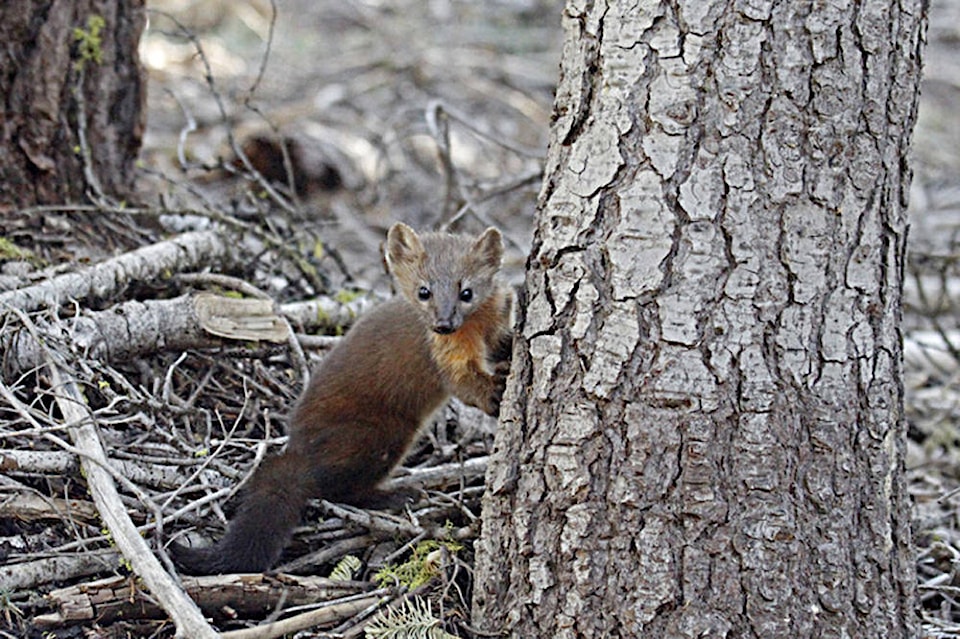Marten tend to be slim creatures, ready to hunt or hide in a tight spot.
But on Haida Gwaii, marten are now living so well that a few are actually fat.
A 2014 study of 85 locally-trapped Pacific marten found most in excellent shape, with plenty of fat even in winter, and a few with so much they rated “obese” on a standard index of wildlife health.
“It broke the scale,” says David Breault, a Master’s student of natural resources and environmental science at the University of Northern British Columbia.
While it’s a rough estimate, trappers’ catches on Haida Gwaii also suggest the islands have five to 10 times more marten today than in the 1940s.
It’s a unique scenario.
Pacific marten usually depend on old-growth forest habitat, where they hunt or shelter by weaselling under fallen logs or into old tree hollows.
Along the California and Oregon coasts, logging of old-growth forests left them so little habitat that people believed them extinct until a few surviving groups were found in the 1990s.
But here on Haida Gwaii, where just 10 per cent of the Skidegate Plateau forest remains old-growth, Pacific marten are thriving even in much younger tree stands.
Breault is now leading a study to try and find out why, and what the marten’s success means for other native Haida Gwaii species that are not doing so well, such as the Haida Gwaii ermine and the northern goshawk.
“That’s kind of what started the ball rolling,” Breault said.
“Maybe marten should be a factor in management of species-at-risk here — so far they haven’t been.”
One of Breault’s big questions is what exactly do marten eat on Haida Gwaii?
Earlier studies of marten stomachs have already shown they feed on deer — a big bonus, especially in winter.
It’s impossible to say if the deer were already dead, or hunted, but islanders have reported seeing marten attack live deer, mostly from above.
“That’s the wolverine’s tactic,” said Breault, speaking of another member of the weasel family.
“They’ll wait in a tree for a caribou to go underneath, and then the wolverine will just drop on them and ride them out until the caribou falls down from exhaustion.”
At one time, Haida Gwaii marten only had two native mammals for prey — Keen’s deer mouse and dusky shrew — but these days, introduced black rat, muskrat, beaver, and red squirrel are all on the menu.
Cameras trained on the nests of sooty grouse suggest marten prey heavily on them, too — and sooty grouse chicks already have a tough time surviving their first year.
“That’s interesting because they are a primary food source for goshawks,” Breault said, noting that Haida Gwaii goshawks are critically endangered.
It’s unclear if marten also prey directly on Haida Gwaii ermine, but the health of the two species does seem intertwined.
Ermine numbers rose for a time in the late 1960s when a severe tick infestation killed off many marten.
Marten may also be keeping ermine numbers low just by out-competing them for food.
Biologists wonder if Pacific marten also have an added advantage over mainland ones — with wider jaws, they may be able to crush the shells of marine invertebrates.
To get a fuller, more precise picture of what marten are eating, Breault is collecting samples of marten hair and analyzing their “isotropic signature.”
“It can tell you a lot,” Breault said, unlike stomach studies, which are usually done in the winter trapping season and only give a snapshot of the harder things marten ate the day they were caught.
By vapourizing a marten hair and looking at its ratio of nitrogen and carbon isotopes, researchers can trace the chemical signatures of everything that marten ate while that hair was growing, and in what proportion.
“You are what you eat, in terms of stable-isotope signatures,” said Breault, noting that a similar study of American people showed nearly all their carbon derived from corn-based or corn-fed food products.
“Most Americans are basically corn, as far as their carbon signature goes.”
To get the samples, Breault and his colleague are setting up “hair snares” on Graham and Moresby Islands — basically capped plastic tubes with bait at one end and some stiff brushes and sticky patches on the way.
The marten get a food reward and a slight hair cut they likely won’t even notice. Besides the isotropic signature, Breault will do genetic studies on the hairs to identify individual marten and estimate their population size.
Using wildlife cameras and highly detailed LIDAR maps donated by Taan Forest, provincial agencies, and islands villages, Breault is also getting a finer picture of what kind of habitat marten prefer on Haida Gwaii.
Islanders can help the project by letting Breault know of any dead songbirds, grouse, or marten they come across (email breault@unbc.ca).
When it’s finished next December, Breault hopes his study will give a better understanding of marten diet, habitat, and numbers on Haida Gwaii, and suggest better ways to preserve other native species that, so far, the marten seem to be leaving behind in their quest for food.

